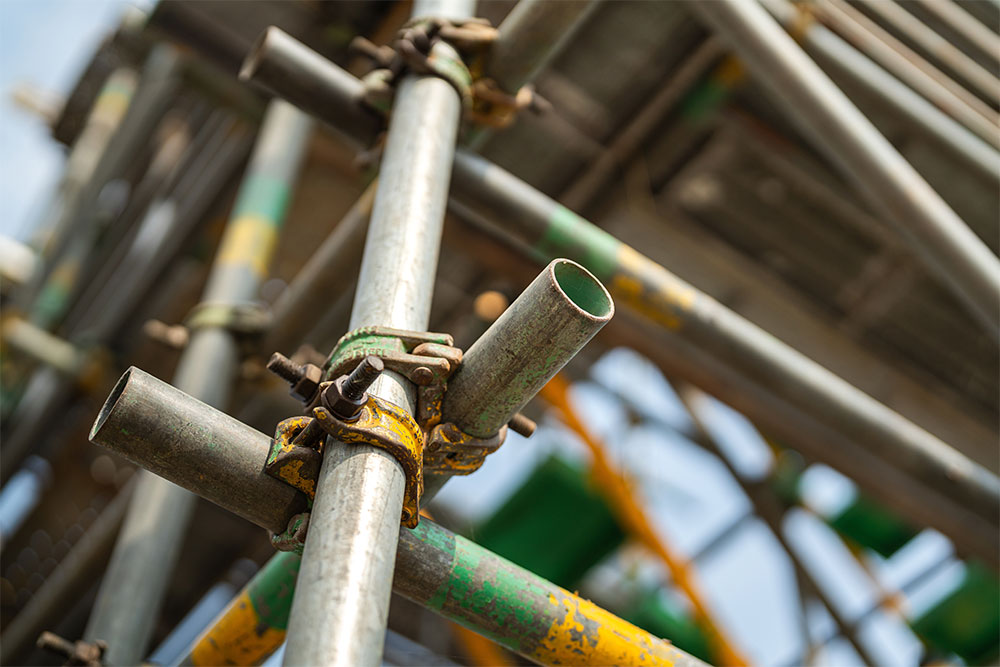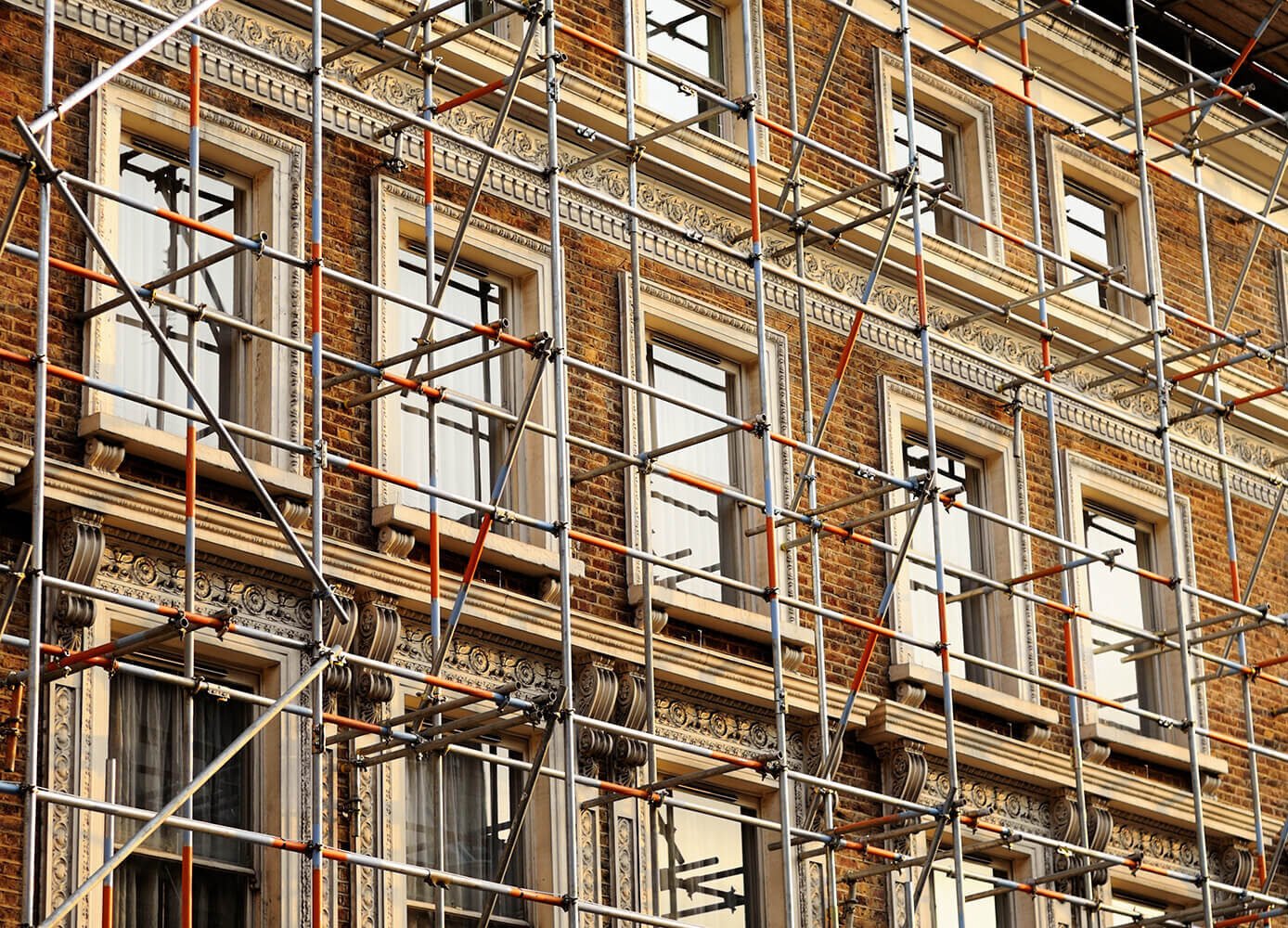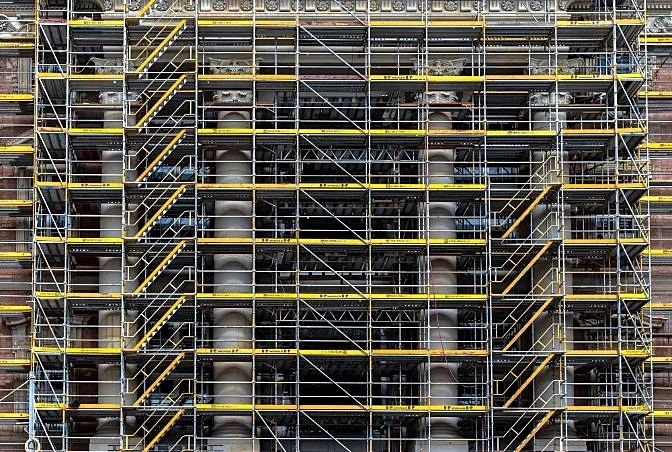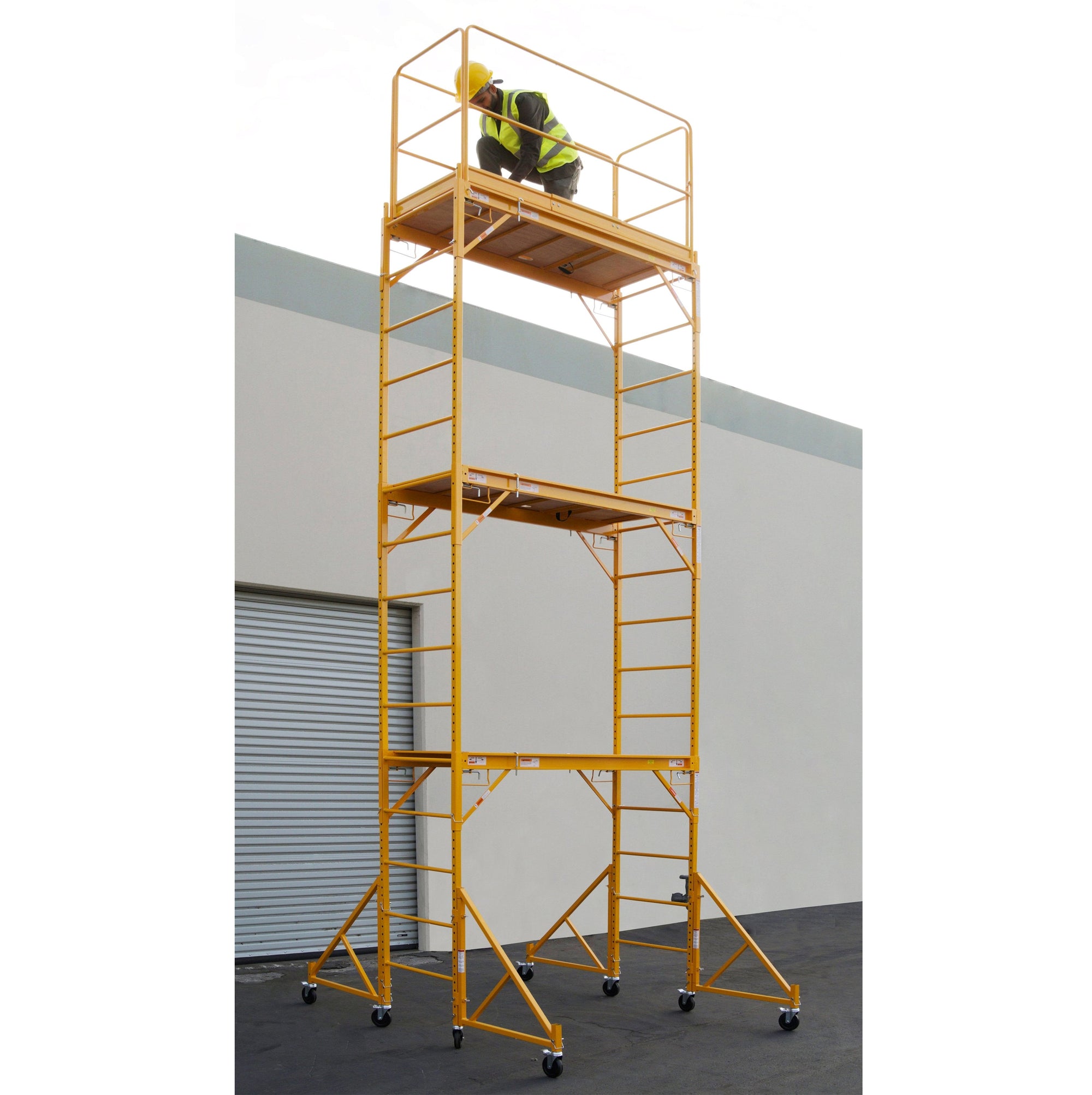Temporary Roof Scaffolding to Ensure Safe Working Conditions During Projects
Exploring the Numerous Sorts Of Scaffolding Utilized in Building Jobs
The building and construction sector depends greatly on different sorts of scaffolding to satisfy particular project needs, each offering unique advantages and applications. Conventional frame scaffolding supplies a durable structure for general tasks, while put on hold scaffolding is essential for deal with high-rise structures. Various other choices, such as system and rolling scaffolding, deal with effectiveness and movement, specifically. The cantilever variant confirms very useful in metropolitan atmospheres where room is constrained. Comprehending the nuances of these scaffolding types is vital for maximizing security and performance on building and construction websites, prompting a better examination of their distinct characteristics and applications.

Conventional Framework Scaffolding
Traditional frame scaffolding is one of the most widely utilized methods in the construction industry because of its robustness and flexibility. This system includes straight and upright frameworks that are set up to produce a steady platform for products and workers. The main elements consist of vertical blog posts, straight ledgers, and diagonal dental braces, which with each other offer a solid framework that can sustain considerable loads.
One of the key advantages of typical frame scaffolding is its adaptability to numerous building and construction jobs, varying from property buildings to huge commercial frameworks. The modular design enables simple setting up and disassembly, making it effective for both lasting and short-term jobs. Additionally, the system can be tailored in height and size, accommodating different structure styles and website problems.
Safety is paramount in scaffolding applications, and typical frame systems are furnished with guardrails and toe boards to protect against falls and make sure employee protection. Furthermore, regular inspections and adherence to security laws are essential in keeping the honesty of the scaffold. Generally, typical structure scaffolding continues to be a fundamental option in the building and construction sector, giving a reputable system for labor and boosting total project effectiveness

Suspended Scaffolding
Put on hold scaffolding provides a distinct remedy for building and construction tasks that need access to raised surface areas, especially in situations where typical frame scaffolding might be impractical. This type of scaffolding is typically suspended from the roofing system or top levels of a framework, using a system of wheels, ropes, and systems to create a working room that can be adapted to various elevations.
Among the primary benefits of suspended scaffolding is its adaptability. It can be easily rearranged or decreased to accommodate adjustments in construction needs, making it perfect for jobs such as window installation, frontage work, and maintenance on skyscraper buildings. Furthermore, the minimal footprint of put on hold scaffolding allows for better usage of ground space in urban atmospheres, where room is commonly minimal.
Safety is a critical consideration in the use of suspended scaffolding. Overall, put on hold scaffolding offers a effective and efficient solution for accessing hard-to-reach locations in numerous building and construction circumstances, enhancing both productivity and safety and security on website.
System Scaffolding
System scaffolding, typically considered a contemporary option in the scaffolding sector, includes pre-engineered parts that can be quickly put together and adjusted for numerous building and construction jobs. Scaffolding. This sort of scaffolding is identified by its modular layout, which enables for flexibility and efficiency on task sites, accommodating various heights and structural requirements
Commonly made from high-strength steel or light weight aluminum, system scaffolding provides enhanced durability and stability. The elements include upright articles, horizontal journals, and diagonal dental braces, which interconnect safely, ensuring a durable framework. The layout usually integrates standard fittings, streamlining setting up and disassembly procedures, thereby reducing labor time and expenses.

Rolling Scaffolding
Rolling scaffolding is a functional choice to traditional set scaffolding, designed for mobility and ease of use on construction sites. This sort of scaffolding contains a system supported by frames with wheels, permitting workers to easily relocate it as required. The flexibility attribute considerably enhances performance, as it decreases downtime related to dismantling and setting up taken care of scaffolding.
Commonly constructed from light-weight materials such as light weight aluminum or steel, rolling scaffolding uses a tough yet mobile option for jobs requiring constant repositioning - Scaffolding. It is specifically helpful in tasks such as paint, drywall installment, and electrical work, where accessibility to various elevations and areas is needed
Safety is extremely visit their website important in rolling scaffolding style, with functions such as locking wheels to stop unexpected movement when in operation, and guardrails to secure workers from falls. Furthermore, many models are adjustable in elevation, accommodating numerous project demands.
Cantilever Scaffolding

The style of cantilever scaffolding typically includes utilizing braces or arms anchored to a building or framework, making it possible for the system to extend exterior safely. Safety and security is extremely important; hence, these scaffolds need to be engineered to withstand different loads and ecological conditions. Regular inspection and maintenance are necessary to ensure architectural stability and employee safety.
Cantilever scaffolding is favored for its flexibility and effective use of space, making it a popular selection in metropolitan atmospheres where area constraints are usual. It promotes much easier accessibility to high elevations, eventually adding to the general effectiveness of building and construction jobs. Similar to all scaffolding types, proper training and adherence to safety and security requirements are critical for employees utilizing cantilever scaffolding.
Final Thought
To conclude, the varied types of scaffolding used my blog in building and construction jobs each serve unique objectives tailored to particular site needs. Conventional structure scaffolding provides stability, while put on hold scaffolding supplies versatility for elevated jobs. System scaffolding facilitates fast setting up, and rolling scaffolding enhances movement for differing workplace. Cantilever scaffolding effectively deals with challenges in urban setups. Recognizing these scaffolding kinds is vital for maximizing safety and efficiency in building and construction, inevitably adding to the effective completion of projects.
Traditional structure scaffolding offers a strong structure for general tasks, while put on hold scaffolding is necessary for job on skyscraper structures.Rolling scaffolding is a functional alternative to traditional fixed scaffolding, made for mobility and simplicity of use on construction sites. As with all scaffolding kinds, correct training and adherence to safety criteria are essential for employees using cantilever scaffolding.
Conventional framework scaffolding offers security, while put on hold scaffolding uses flexibility for elevated tasks. System scaffolding facilitates fast assembly, and rolling scaffolding improves movement for differing job environments.